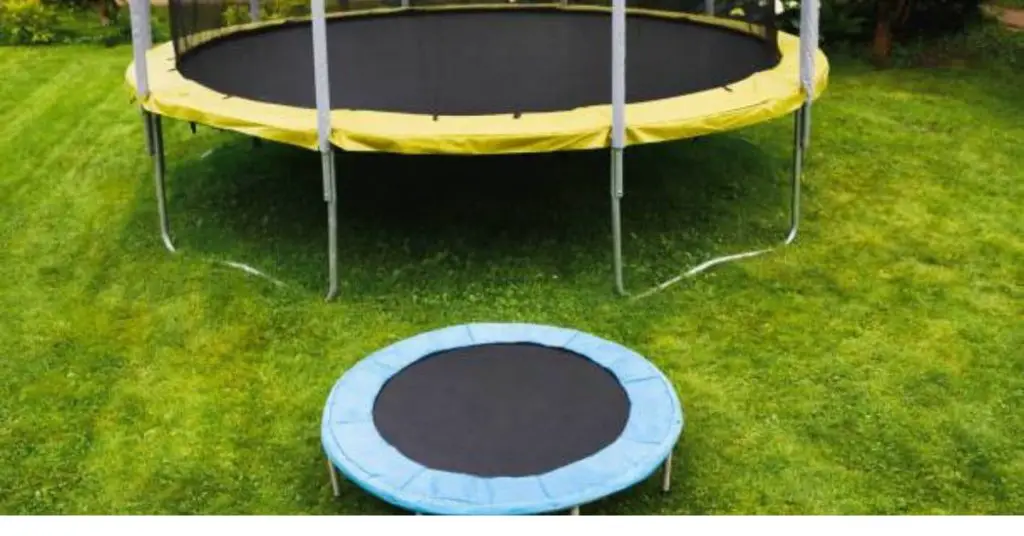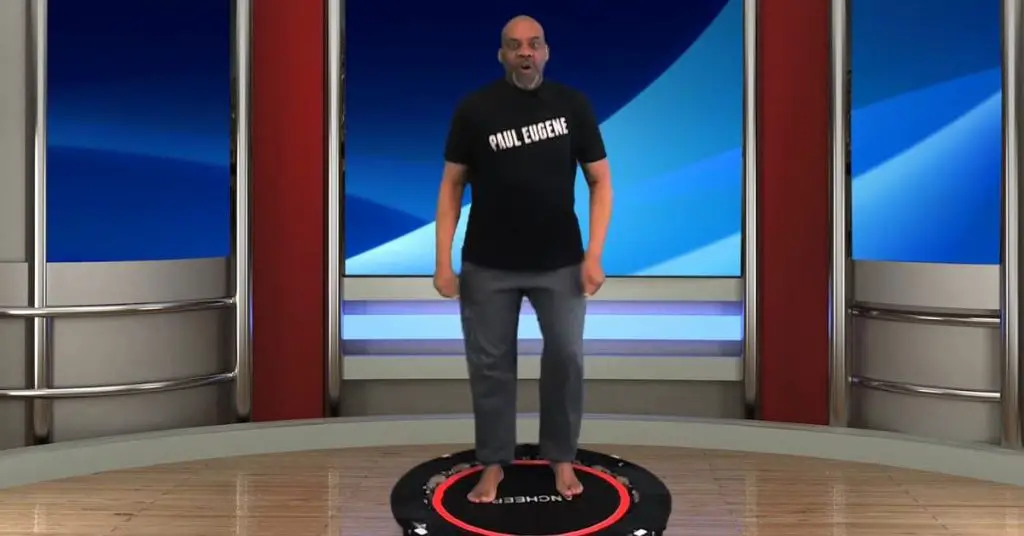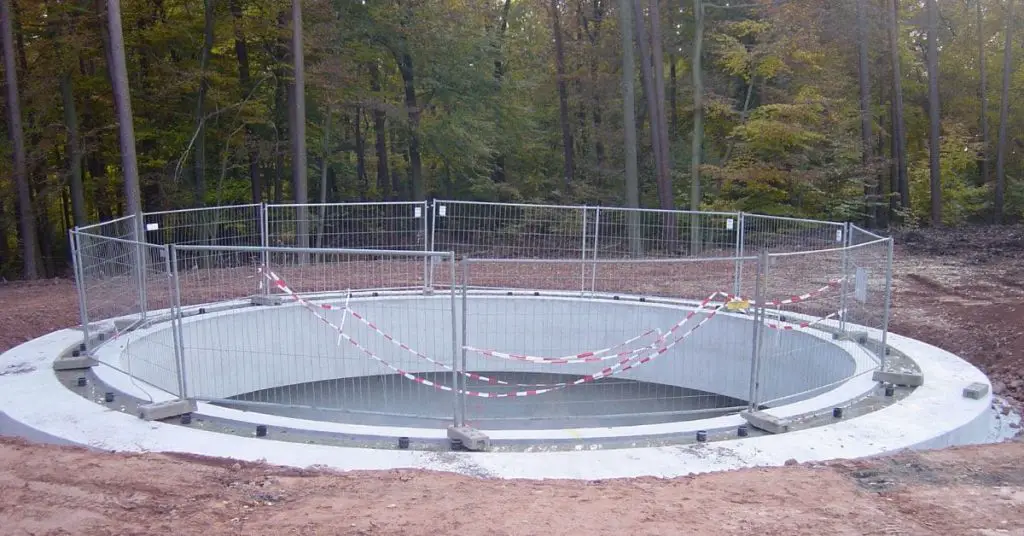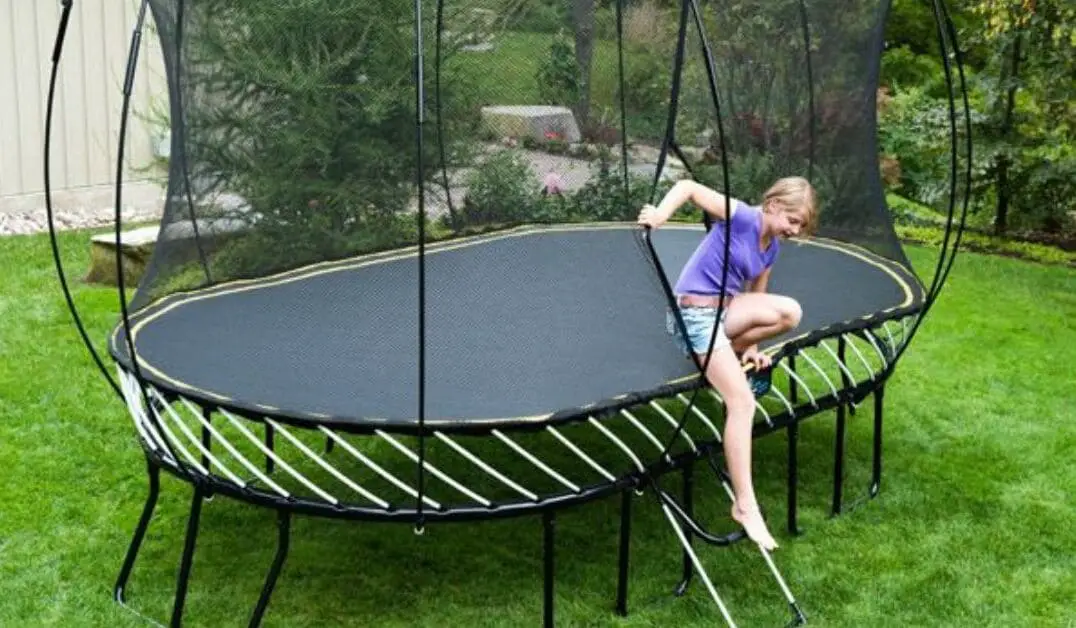Trampolining is a fun and exciting outdoor activity people of all ages enjoy. However, when choosing the right trampoline size, it can be challenging to determine what size is appropriate for your specific needs. Whether you’re looking for a trampoline for exercise, recreation, or competition, choosing the right size is essential to ensure everyone can safely enjoy this activity.
Factors such as the number and age of users, available space, and the purpose of the trampoline should all be considered when determining the appropriate size of trampoline you need. With so many different sizes and shapes available on the market, it can be overwhelming to choose the right one.
This article will provide a step-by-step guide to help you determine the appropriate trampoline size for your needs. By the end of this article, you will better understand how to choose the right trampoline size to ensure that you and your family can safely enjoy this fun outdoor activity. How
Choosing the right trampoline size is essential to ensure everyone can safely enjoy this fun outdoor activity. Factors such as the number and age of users, available space, and the purpose of the trampoline should all be considered when determining the appropriate size of trampoline you need.
How big of a trampoline do I need?

Choosing the right size of a trampoline depends on various factors, including the number and age of users, available space, and the purpose of the trampoline. Here are some general guidelines to help you determine the appropriate size of trampoline you need:
- Number of users:
- Age and size of users:
- Available space:
- Purpose of trampoline:
Factors to Consider When Choosing Trampoline Size
Trampolines are a great source of entertainment, exercise, and fun for the entire family. However, when it comes to choosing the right trampoline, there are a few factors you need to consider. In this article, we will explore some key factors to remember when selecting the appropriate trampoline size for your needs.
Number of Users:
The first thing to consider when choosing a trampoline size is the number of users using it at once. If you have a large family or plan on having friends over to jump on the trampoline, you will need a larger size to accommodate everyone.
Remember that trampolines come in different sizes, ranging from small sizes for one user to large sizes that can accommodate several users at once. Therefore, it is essential to choose the right size based on the number of people using it.
Age and Size of Users:

The users’ age and size are other critical factors to consider when choosing the right trampoline size. Children and adults have different weight ranges and sizes, impacting the size of the trampoline you choose.
If you have young children, you may want to choose a smaller size that is easier for them to jump on and off. On the other hand, if you have older children or adults, you may need a larger size to accommodate their weight and size.
Space Available:
The amount of space in your yard is another important factor when choosing a trampoline size. You need to measure the available length and ensure the trampoline size you choose will fit comfortably in the area without taking up too much space.
Remembering that you need to leave some space around the trampoline for safety reasons is also important.
Purpose of Trampoline:
The purpose of the trampoline is also essential to consider when choosing the right size. If you plan on using the trampoline primarily for exercise, you may need a larger size to accommodate more users and allow for different types of exercises.
If you plan on using the trampoline for recreational purposes, you may need a smaller size that is easier to set up and take down. If you plan on using the trampoline for competitive purposes, you may need a larger size that meets the competition standards.
Common Trampoline Sizes
When it comes to choosing a trampoline size, there are several options available on the market. Trampolines come in different sizes, ranging from small for one user to large sizes that accommodate several users simultaneously.
We will discuss the most common trampoline sizes available on the market, including their diameters and weight limits. We will also provide the pros and cons of each size based on the factors discussed in the previous section.
Small Trampolines:

Small trampolines typically have a diameter of 8-10 feet and a weight limit of up to 200 pounds. These trampolines are ideal for young children or people with limited yard space.
Small trampolines are easy to set up and take down, making them convenient for people who want to use them for exercise or recreational purposes.
However, they may not be suitable for older children or adults, as they may not have enough space to perform more complex jumps or exercises.
Medium Trampolines:
Medium trampolines typically have a diameter of 12-14 feet and a weight limit of up to 300 pounds. These trampolines are suitable for families with children of different ages and sizes. They provide enough space for several users to jump at once, making them great for family fun and exercise.
However, they require more space than small trampolines, which can be a drawback for people with limited yard space.
Large Trampolines:

Large trampolines typically have a diameter of 15-17 feet and a weight limit of up to 400 pounds. These trampolines are ideal for families with older children or adults who want to use the trampoline for exercise or competitive purposes.
They provide ample space for several users to perform more complex jumps and exercises. However, they require a lot of space, which may not be feasible for people with smaller yards. They are also more expensive than small and medium trampolines.
Extra Large Trampolines:
Extra large trampolines typically have a diameter of 18-20 feet and a weight limit of up to 500 pounds. These trampolines are suitable for families with multiple children or adults who want to use the trampoline for competitive purposes.
They provide the most space for several users to jump and perform complex exercises, making them ideal for athletes or gymnasts. However, they require a lot of space and are more expensive than other sizes.
Choosing the Right Trampoline Size
Choosing the right trampoline size can be daunting, especially if you are a first-time buyer. With so many different sizes available, it can be challenging to determine which one is right for your needs.
We will provide a step-by-step guide to help you choose the appropriate trampoline size for your needs. We will also include a chart or infographic to make the process easy to follow.
Step 1: Determine the Purpose of the Trampoline
The first step in choosing the right trampoline size is to determine the purpose of the trampoline. Will it be primarily used for exercise, recreation, or competition? Knowing the goal will help you choose the size you need.
For example, if you are using the trampoline for exercise, you may want to choose a larger size to allow for more space to perform activities.
Step 2: Consider the Number and Size of Users
The second step is to consider the number and size of users. Will the trampoline be used by one person or several people at once? If you have multiple children or adults who want to use the trampoline simultaneously, you may want to choose a larger size to accommodate them comfortably.
You should also consider the size and weight of the users. If the users are primarily children, a smaller trampoline may be sufficient. However, a more giant trampoline may be necessary if the users are adults.
Step 3: Evaluate the Available Space
The third step is to evaluate the available space in your yard. Trampolines come in various sizes, and you need enough space to accommodate the trampoline you want to buy. Measure the area where you plan to place the trampoline and choose a size that fits comfortably.
Step 4: Check the Weight Limit

The fourth step is to check the weight limit of the trampoline. Each trampoline has a specific weight limit, and you should choose a size that can accommodate the weight of the users.
If you have multiple users, you may choose a trampoline with a higher weight limit to ensure it can support everyone safely.
Step 5: Review the Pros and Cons of Different Sizes
The final step is to review the pros and cons of different trampoline sizes. Consider the factors discussed in section II of this article, including the number and size of users, available space, and purpose of the trampoline.
Use the chart or infographic provided to compare the different sizes and choose the best fit your needs.
Trampoline Size Comparison Chart or Infographic:
Trampoline Size Diameter Weight Limit Suitable For
Small 8-10 ft. Up to 200 lbs Young children, limited yard space
Medium 12-14 ft. Up to 300 lbs Families with children of different ages/sizes
Large 15-17 ft. Up to 400 lbs Families with older children/adults
Extra Large 18-20 ft. Up to 500 lbs Families with multiple children or athletes/gymnasts
Safety Considerations

When it comes to using a trampoline, safety should be the top priority. While trampolines can be fun to exercise and spend time outdoors, they can also be dangerous if not used properly.
We will emphasize the importance of safety when using a trampoline, discuss safety features to look for when purchasing a trampoline, and provide safety tips for trampoline use.
Importance of Safety
According to the Consumer Product Safety Commission, trampolines cause tens of thousands of injuries each year. These injuries can range from minor bruises and cuts to more severe injuries such as broken bones and head injuries.
Therefore, taking safety precautions when using a trampoline is essential to minimize the risk of injury.
Safety Features to Look for When Purchasing a Trampoline
When purchasing a trampoline, there are several safety features to look for. One important feature is an enclosure net, which surrounds the trampoline and prevents users from falling off the trampoline.
Another feature is padding, which covers the springs and frame of the trampoline to prevent users from getting caught in the springs. Additionally, look for trampolines that have sturdy boundaries, secure legs, and proper weight limits.
Safety Tips for Trampoline Use
In addition to purchasing a trampoline with safety features, users should follow several safety tips when using a trampoline. These tips include:
- Limiting the number of users: Only one person should be on the trampoline at a time. Multiple users can collide with each other, leading to injuries.
- Proper jumping techniques: Users should jump in the center of the trampoline and avoid attempting flips or other tricks unless they have adequate training and supervision.
- Adult supervision: Children should always be supervised by an adult when using a trampoline.
- No roughhousing: Users should avoid roughhousing or horseplay on the trampoline as it can lead to injuries.
- Regular maintenance: Ensure the trampoline is maintained correctly, including tightening bolts, replacing worn parts, and keeping it clean.
FAQs
Q.1 How do I choose the right size trampoline for my family and backyard space?
The size of your trampoline should be determined by the age and size of the users, the amount of available space in your backyard, and your budget. We recommend choosing a trampoline that is large enough to comfortably accommodate all users while leaving ample clearance around the edges, and is equipped with safety features such as a sturdy frame, safety netting, and padding.
Q.2 What are the safety guidelines for using a trampoline?
To ensure safe use of your trampoline, follow these guidelines:
- Always supervise children when using the trampoline.
- Only allow one user at a time on the trampoline.
- Jumpers should remove shoes, jewelry, and any sharp or loose objects before using the trampoline.
- Always use safety netting and padding, and regularly inspect and replace any worn or damaged components.
- Do not attempt to perform high-risk maneuvers or tricks.
- Avoid using the trampoline in inclement weather or when the surface is wet or slippery.
- Regularly check the trampoline for proper assembly, stability, and integrity.
Q.3 Can trampolining be a safe form of exercise?
Yes, trampolining can be a safe and effective form of exercise when proper safety guidelines and techniques are followed. Trampolining can help improve cardiovascular fitness, balance, coordination, and overall physical health. However, it is important to use caution and avoid overexertion, especially for individuals with pre-existing health conditions or injuries.
Q.4 What are the potential risks and dangers of using a trampoline?
The potential risks and dangers of using a trampoline include falls, collisions with other users or objects, improper landings, and the risk of injury to the head, neck, spine, and other body parts. Injuries can range from mild strains and sprains to more serious injuries such as broken bones and spinal cord injuries.
Q.5 How can I maintain and care for my trampoline?
To maintain your trampoline and ensure its longevity, we recommend regularly inspecting the frame, mat, springs, safety netting, and padding for any signs of wear or damage and promptly repairing or replacing any components as needed. Additionally, it is important to regularly clean the trampoline and store it in a dry, secure location when not in use.
Conclusion
In conclusion, purchasing a trampoline can be a fun and exciting addition to any backyard, but it is important to choose the right size to ensure safety and enjoyment. By considering the number and size of users, available space, and intended purpose, readers can determine the appropriate size for their needs.
It is also crucial to prioritize safety by looking for features such as enclosure nets and padding and following safety tips such as limiting the number of users and proper jumping techniques. With the right size and safety features in place, a trampoline can provide hours of fun and exercise for the whole family.
We hope this guide helped you understand how to choose the right size of trampoline for your needs. If you have any questions, please feel free to ask in the comments below.

